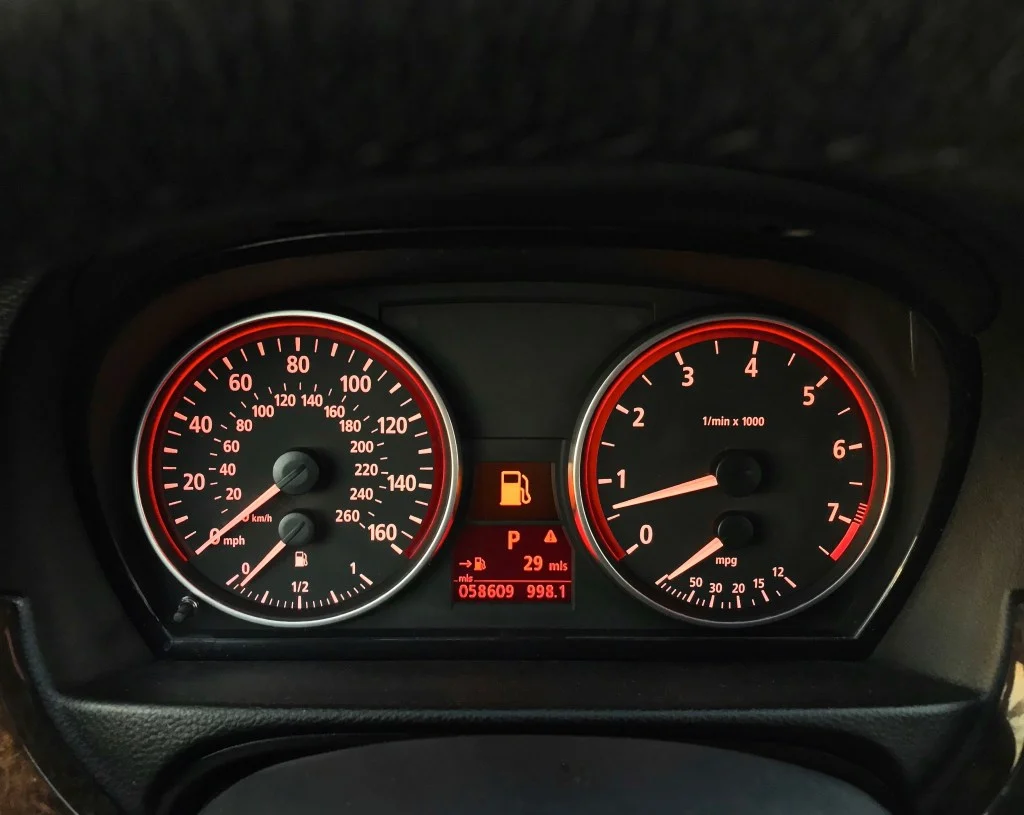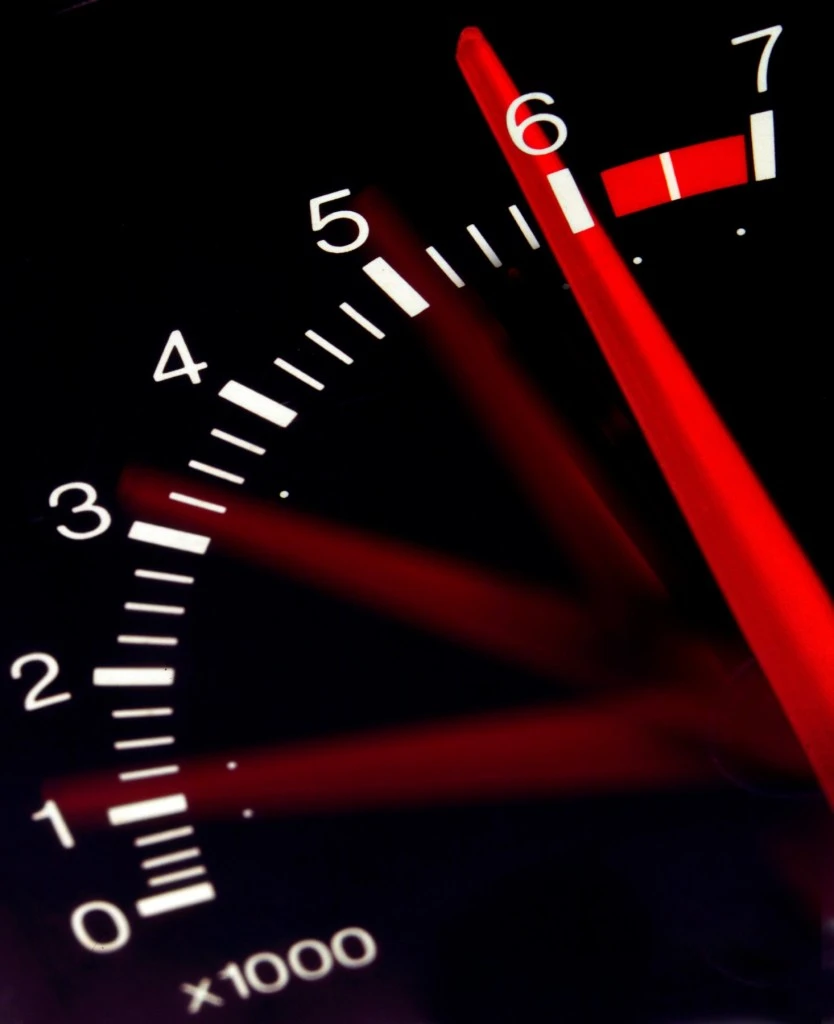You’ve likely noticed the red section of numbers on your tachometer. Your curiosity might have you wondering if you should ever get your RPMs to the red line.
Most drivers never have to worry about them because, according to CarMax, less than 5% of the cars sold in 2020 were manual transmissions. Automatic transmissions will (mostly) handle the shifting and keep you from pushing your vehicle into these forbidden red numbers.
Keep reading if you’d rather play it safe and read about what could happen instead of finding out for yourself. We’re sharing whether or not your vehicle will be safe if you try redlining it.
Let’s get started.
What Are RPMs?
The term “RPM” is short for revolutions per minute. It is a measurement to know how fast a piece of machinery runs. In a vehicle engine, the term RPM tells you how many times the crankshaft makes a full rotation in a minute. The RPMs tell you the number of times each piston goes up and down in a minute.
You’ll notice that your RPMs constantly change while driving, especially as your vehicle shifts gears. Once you reach cruising speed, they’ll hold steady and only change as you push or release the gas pedal.

Keeping your RPMs down typically improves fuel economy because your engine has to work less.
Where Should Your RPMs Be When You Start Your Car?
The starting RPMs of a vehicle will vary depending on the make and the engine’s power. A standard 2.0-liter will start with somewhere between 500 to 800 RPMs. Vehicles larger than 2.0 liters will begin upward of 550 to 750 RPMs. However, weather conditions like cold weather can cause your car to start with higher than average RPMs.
If you notice that your vehicle idles with high RPMs, have it looked at by a trusted mechanic. You could have a vacuum leak, bad spark plugs, a bad fuse, or even a faulty computer system in the powertrain.
What Happens if My RPM Goes Into Red?
If you’re driving an automatic vehicle, you likely don’t have to worry about your RPMs going into the red. Your vehicle will automatically shift when it senses the engine approaching the line. Some of these systems have safety features to reduce fuel to the engine to avoid it from damaging itself in certain circumstances.
If you drive an older vehicle or a manual, you might worry about putting it in red. However, you likely won’t have a problem if you drive responsibly.
If your engine is warm and your RPMs hit the red, it won’t cause any instantaneous damage. It simply increases the wear and tear on your vehicle and makes it inefficient.

Can Redline Damage Your Engine?
Modern vehicles have limiters that will prevent you from damaging your engine due to redlining it. Once your car goes into the redline zone, the limiter will stop the engine from revving and protect it.
If you redline your vehicle for an extended time, you will overwork it. Redlining reduces the engine’s life and makes it more susceptible to mechanical issues.
While you likely have nothing to worry about if your car redlines for a second or two, doing this regularly or for an extended time is not a good idea. We recommend you avoid doing it.
What Should My RPM Be at 70 MPH?
A typical vehicle will sit somewhere between 2,000 and 3,000 RPMs. If you feel that yours has high RPMs at 70 MPH, ensure you’ve put it in “Drive” and not one of the manual gears.
You’ll also want to make sure it’s shifting into “Overdrive” when you get up to speed. Overdrive helps reduce how hard your engine works and provides the best fuel economy.
What Is Considered High RPM?
High RPMs will vary from one vehicle to the next. Manufacturers do a lot of testing to set the “red line” zone. When they assign a vehicle’s “red line,” they indicate the safe operating range for that engine and setup. What’s high RPMs for a Corvette will be different than a Prius.
Keep an eye on your redline and the RPMs if you’re worried about running your engine too hard. However, most drivers who don’t push their vehicle’s power and acceleration limits won’t have a problem.
What RPM Should You Cruise At?
Cruising speed on a vehicle will likely run between 1,800 to 2,000 RPMs for a small car and slightly more for larger vehicles.
If your RPMs run substantially higher, you’ll want to check and make sure you put it into the correct gear when driving. If all is well, you’ll want to have a mechanic take a look and make sure everything is in functioning order for your vehicle.
What Car Has the Highest Redline?
Some luxury sports cars like a McLaren, Lamborghini, and Ferrari have impressive power and acceleration.
They’ll push well over 8,000 to 9,000 RPMs when redlining, but they’re not the highest. The highest redlining car is the Murray T50 supercar.
This 3.9-liter motor sounds like a 1990s F1 and flexes its 12,100 RPMs in a deafening roar. However, the Murray T50 comes with a $3 million price tag, so don’t count on seeing too many of them.
Is a Higher Redline Better?
A higher redline means the engine has more power and can withstand the increased RPMs. However, the harder an engine has to work, the more fuel it will consume.
But, if you want to get acceleration and performance out of your vehicle, you may not worry much about your fuel economy. Like most drivers, we focus on getting the most MPGs out of every tank and keeping our RPMs well below the redline.
Have you ever redlined a vehicle?
Discover the Best Free Camping Across the USA
To be honest with you, we hate paying for camping. There are so many free campsites in America (with complete privacy).
You should give it a try!
As a matter of fact, these free campsites are yours. Every time you pay federal taxes, you’re contributing to these lands.
Become a FREE CAMPING INSIDER and join the 100,000 campers who love to score the best site!
We’ll send you the 50 Best Free Campsites in the USA (one per state). Access the list by submitting your email below: